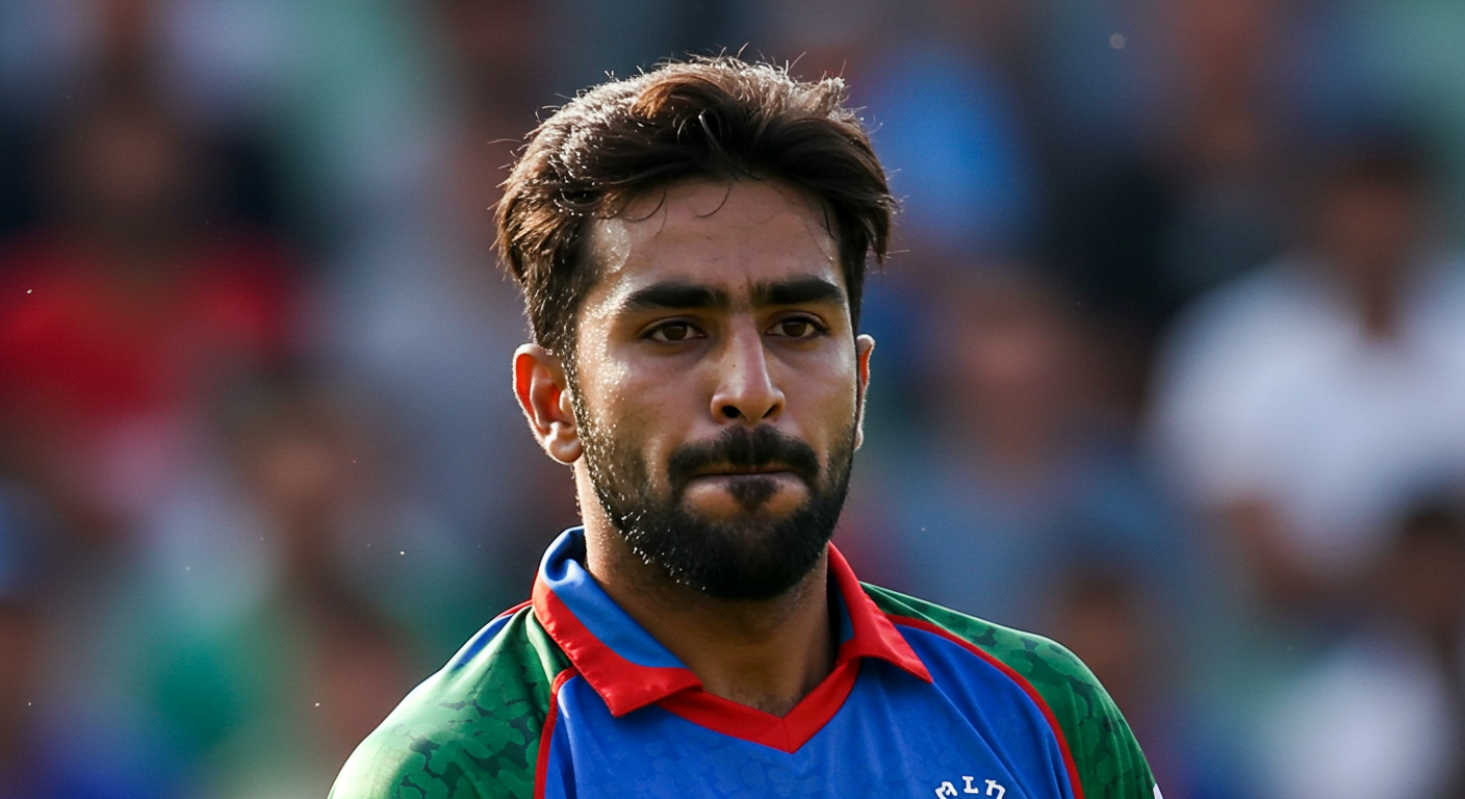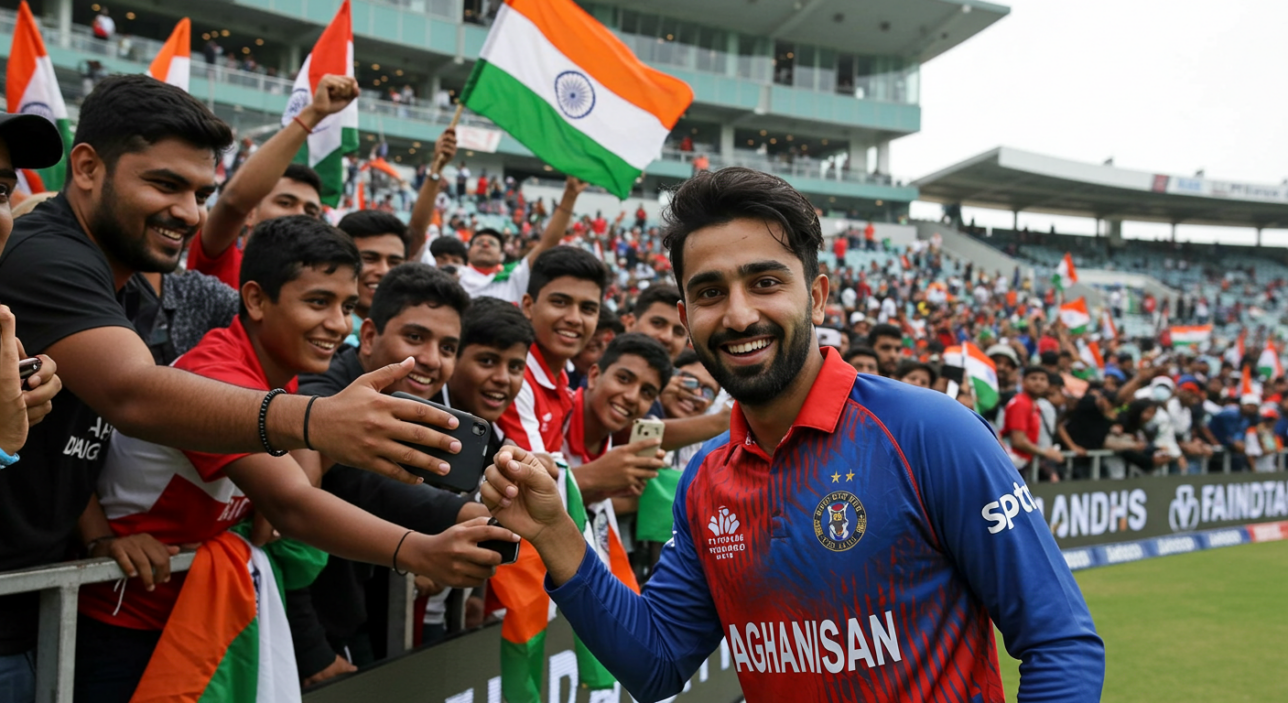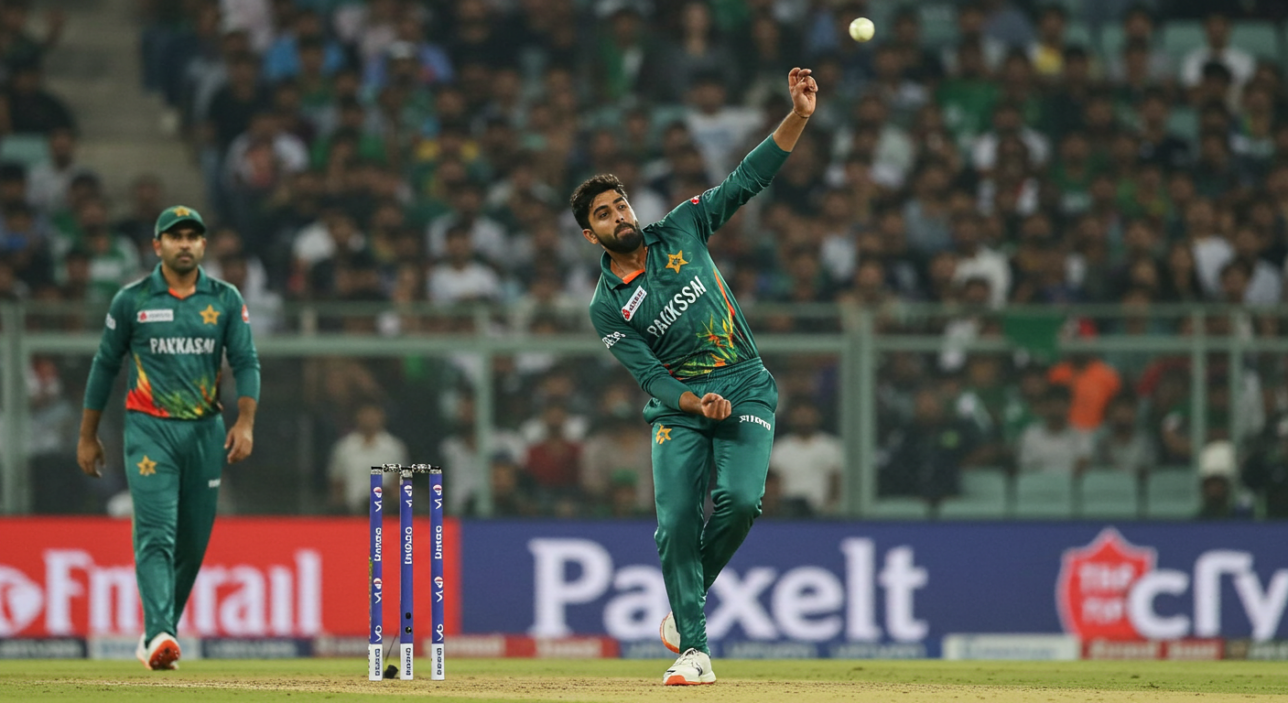
Rashid Khan: How a Teenager Spun Afghanistan onto the Global Stage
Rashid Khan’s rise can’t be separated from the story of Afghanistan itself — a country where cricket was once played in refugee camps, on rough concrete strips, with makeshift stumps and broken bats. He didn’t just emerge from obscurity. He emerged from instability. From a nation still searching for sporting identity, let alone a global icon.
Born in Nangarhar in 1998, Rashid grew up watching his family flee conflict, return, rebuild, and flee again. And through it all, cricket became the constant. Not tradition, not structure — just raw love for the game, passed between brothers, absorbed from television, mimicked in dusty courtyards.
What set Rashid apart wasn’t just skill. It was the audacity. The speed of his action. The pace off the pitch. The delivery that looked like a leg-break but darted the other way. He wasn’t copying Shane Warne or Anil Kumble — he was crafting his own mystery, because nobody had shown him how to do it “properly“.
At 17, he debuted for Afghanistan’s national side. By 18, he was tormenting Zimbabwe’s top order and making Pakistan’s batters play down the wrong line. By 19, he had 100 international wickets and a contract with Sunrisers Hyderabad.
He wasn’t just representing Afghanistan. He was redefining how the world saw it.
No Red Carpet, Just Wickets

There was no soft launch. No nurturing phase. Rashid Khan was dropped straight into the deep end of international cricket and asked to survive. Instead, he devoured.
He didn’t need five-day cricket to show his value. He didn’t wait for the “right conditions” to turn the ball. Rashid turned it wherever he landed. Quick through the air. Relentless over after over. One spell in a Zimbabwe ODI yielded seven wickets. The figures looked fake.
Batters weren’t just getting out — they were baffled. There were no visual cues. No drop in shoulder. No flight to read. Just a short run-up, a flick of the wrist, and chaos.
Soon, the world took notice. Afghanistan weren’t supposed to produce bowlers like this. They weren’t supposed to threaten top nations. But here was a teenager ripping through middle orders, shrugging off reputations, and walking off with a grin and the match ball.
He wasn’t bowling for effect. He was bowling for belief. For teammates back home. For kids with tennis balls and no nets. For a country where cricket was hope and Rashid Khan had become its loudest expression.
The IPL Didn’t Discover Rashid — It Amplified Him
By the time Rashid Khan entered the IPL in 2017, he was already a sensation. But there’s a difference between taking wickets in Harare and holding your nerve in Hyderabad, in front of 40,000 people and millions watching live. The stakes weren’t just higher — they were personal.
When Sunrisers Hyderabad picked him up, many saw it as a gamble. A teenager from a war-torn country, unknown to most fans, untested in Indian conditions. But anyone who’d watched him bowl knew it wasn’t a risk.
His very first season, he made batters look ordinary. Slipping in googlies with no visible change in action. Pounding the pitch with pace, not loop. In a league built on six-hitters and batting depth, Rashid was a glitch in the system — a leg-spinner who offered no time, no tells, no pattern.
And yet, even as the wickets piled up, Rashid remained grounded. There were no extravagant celebrations. Just a finger to the sky, a word with his captain, and back to the top of his mark.
The IPL didn’t change Rashid. It magnified him. His success forced commentators to learn how to pronounce Nangarhar. It made franchises believe that Afghan talent wasn’t a novelty — it was an asset. And it showed kids back in Kabul and Kandahar that cricket wasn’t just a dream — it was a career.
One Man, A Nation’s Momentum

As Rashid Khan grew, so did Afghanistan. Their cricket board stabilised. Fixtures against bigger nations became more frequent. Test status arrived. And with every step, Rashid was in the centre — not just taking wickets, but giving the team a sense of legitimacy.
He was never just a spinner. He became a translator in post-match interviews. A bridge between dressing rooms. A face that fans could trust, and teammates could lean on. When Afghanistan played India, Australia, Pakistan — Rashid didn’t blink. He competed. And that confidence spread.
Opposition teams stopped treating Afghanistan like charity fixtures. Analysts started writing bowling plans. Commentators stopped with the “what a story” takes and started focusing on the threat. That shift — from sympathy to strategy — happened because Rashid gave his team teeth.
His presence made other Afghan players better. They batted deeper because they knew Rashid could win games with the ball. They fielded harder because they didn’t want to waste the pressure he’d built.
He wasn’t carrying the team. He was pulling it forward — from plucky underdog to worthy opponent.
Captaincy Wasn’t the Dream — But Rashid Took the Weight
Rashid Khan didn’t chase leadership. He never needed the title to be a voice. But when Afghanistan’s captaincy changed hands amid boardroom noise and public pressure, he stepped in — younger than most, quieter than most, and already more experienced than all.
It was never about speeches or slogans. Rashid led like he bowled — fast, direct, no frills. His captaincy wasn’t perfect. Tactically, he was still learning. But symbolically, it mattered. It told a fractured team and a hopeful fanbase that someone who had played in the biggest leagues, against the best in the world, still cared enough to front up for Afghanistan — every format, every fixture.
The burden was immense. Expectations weren’t just sporting — they were national. Rashid became more than an athlete. He was a role model, a talking point, a diplomatic figure, sometimes even a symbol of what Afghanistan could be if left to thrive.
And yet, he never distanced himself. He didn’t cherry-pick tournaments or formats. He showed up. Every time. Whether it was a Test against Zimbabwe or a warm-up against the Netherlands. Because for Rashid, the badge on the shirt meant more than the logos on the sleeve.
The Quiet Power of Global Loyalty

Most players jump franchises, chase bigger deals, or look for a better marketing fit. Rashid Khan could’ve done the same. But from 2017 to 2021, he stayed with Sunrisers Hyderabad. And when he did move, it was to Gujarat Titans, not for the glitz — but for the chance to lead a new project on his terms.
In an era where loyalty is rare and T20 cricket is a carousel, Rashid’s choices have stood out. He doesn’t posture on social media. He doesn’t chase brand deals in between overs. He lets the ball speak, and when it does, people listen.
Whether it’s the Big Bash, the Hundred, or the Caribbean Premier League, Rashid’s role is always the same: frontline spinner, crisis-breaker, pressure-handler. Teams don’t just hire him for wickets — they hire him to shift tempo, to win key overs, to calm chaos.
He’s the bowler you turn to when 10 an over feels inevitable. The one who doesn’t flinch when a batter charges down the pitch. He doesn’t bowl to survive. He bowls to tilt matches, often with no theatrics and no headline-grabbing moments — just dot balls, pressure, collapse.
More Than a Cricketer, Less Than a Myth
Rashid Khan didn’t ask to become the face of a country’s sporting ambition. But that’s what he is. Not by shouting, not by branding — by showing up, match after match, wicket after wicket, in a jersey that always carries more than just a name.
He’s the reminder that Afghanistan is not just headlines and heartbreak. It’s talent. It’s craft. It’s fight. And through cricket, through Rashid, it found a way to be seen for something beyond war.
Young Afghan boys in refugee camps now bowl with flicked wrists and shorter run-ups. They mimic his release, his subtle variations, his calm. Rashid made that possible — not just by playing, but by thriving against all odds.
He doesn’t need statues or tributes. His legacy isn’t built in bronze. It’s built in moments: the googly to knock over a set batter, the last-over defence when all seemed lost, the casual stumping from a sharp catch at backward point.
And he’s still only in his mid-twenties. Still learning. Still evolving. Still carrying a team, and quietly, a generation.
Conclusion: Rashid Khan and the Spin That Shifted Everything

Rashid Khan didn’t come from a cricketing dynasty. He didn’t have elite coaching or infrastructure or privilege. He had a tennis ball, a dusty yard, and a country that desperately needed a hero it could believe in.
And somehow, with nothing but instinct and hunger, he spun himself into history. He made world-class batters look clueless. He brought crowds to their feet in countries he couldn’t have named as a child. He turned franchise owners into believers and teammates into brothers.
But most importantly, he spun Afghanistan onto the map — not with politics, but with precision. Not with speeches, but with leg-breaks. Not with noise, but with results.
He’s not finished. Not even close. But even now, if Rashid Khan stopped today, cricket would still owe him a debt. Because sometimes it takes just one player — one wrist, one spell, one story — to change everything.





